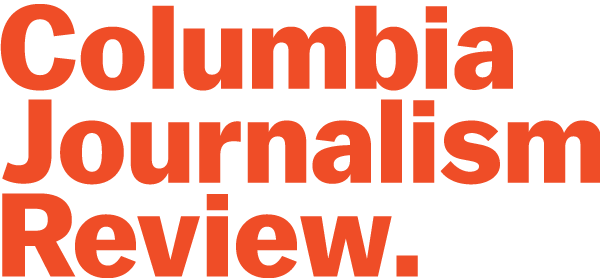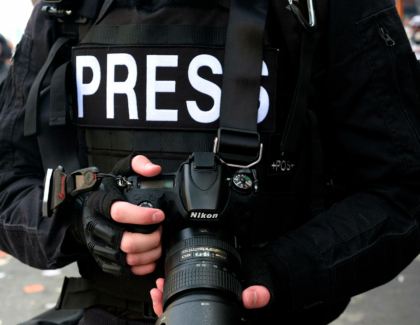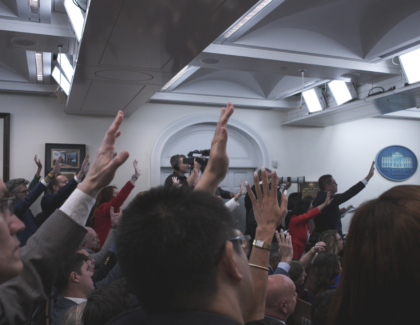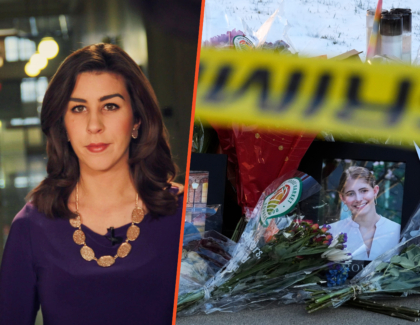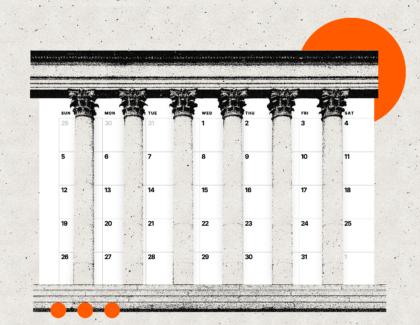Sign up for the daily CJR newsletter.
Last week, a federal judge ordered the White House to end its ban on the Associated Press, which has (mostly) stopped the news agency from covering the Oval Office and similar settings, over the agency’s refusal to rebrand the Gulf of Mexico as the “Gulf of America” in line with President Trump’s wishes. The judge said that the AP was not entitled to special access, but does have a constitutional right to equal treatment: “Under the First Amendment, if the government opens its doors to some journalists—be it to the Oval Office, the East Room, or elsewhere—it cannot then shut those doors to other journalists because of their viewpoints,” he wrote. “The Constitution requires no less.” If the ruling was, perhaps, surprising (as I noted in this newsletter two weeks ago, the judge had reportedly sounded skeptical of the AP’s case during a key hearing), it was certainly embraced as a much-needed win—for the AP, of course, but also for a wider industry under political attack. For The Guardian’s Margaret Sullivan, the ruling suggested that, in Trump’s America, “standing up for one’s principles may not be just a gesture made in vain.” For the ex-CNN anchor Jim Acosta, it was evidence of the fact that “our courts can work,” and of his proposition that “folks need to have some semblance of hope that the guardrails of our democracy will hold.”
In my newsletter two weeks ago, I wrote about the hearing in the AP’s case alongside a range of contemporaneous developments that, together, constituted a real-time test of the new administration’s power to bring the press to heel and the power of the press to fight back. I wrote that the AP’s case and related dynamics—not only the reported attitude of the judge, but fears that other reporters on the White House beat, and the Correspondents’ Association that represents them, weren’t standing up to Trump with sufficient strength—did not augur particularly well, and noted other stories that ranged from the dispiriting to the horrifying, including the announcement of a Federal Communications Commission probe of ABC and its owner, Disney, over their supposedly insidious diversity policies, and plainclothes immigration officials snatching a foreign student at Tufts University off the street, seemingly over an op-ed about Israel that she coauthored in the student paper. I also, however, noted other stories about the new administration and the media that appeared to be more hopeful—not least the early legal victories that appeared to stall official efforts to gut the US Agency for Global Media, which oversees Voice of America and other broadcasters.
Last week’s AP ruling appeared to push that story, too, to the hopeful side of the ledger. But the story of the Tufts student, Rümeysa Öztürk, if anything got bleaker last week: on Thursday, she detailed, via a court filing, how she feared that the people who swept her off the street intended to kill her, as well as troubling information about the conditions of her detention; then, yesterday, the Washington Post reported that Öztürk was detained despite a State Department office having found that there were no grounds to do so. Yesterday also brought a bleak story involving the FCC: in a post on social media, Trump chastised reporting that he’d just seen on 60 Minutes and called on the FCC to impose “the maximum fines and punishment” for supposed “illegal behavior” at CBS (which Trump was already targeting via an Orwellian lawsuit). In recent days, there have been new sources of bleakness, too, not least Trump’s signing of memos directing the government to investigate officials who crossed him in his first term; this wasn’t first and foremost an attack on press freedom, but, as CNN’s Brian Stelter noted, it was “inextricably linked to the media,” not least since one of the targets, Miles Taylor, is an author who came to prominence after writing an (initially anonymous) New York Times op-ed that detailed a quiet internal resistance to Trump back in 2018. (We interviewed Taylor as a media figure in 2023.) Even the prior glimmers of hope are flickering. Radio Free Europe/Radio Liberty, one of the broadcasters under the purview of USAGM, is still fighting to get the agency to actually disburse funds that looked like they would be restored amid a legal fight. On Saturday, another, the Middle East Broadcasting Networks, announced a “drastic” reduction in staffing as USAGM continues to withhold its funding.
Even the story of the AP ruling was complicated. The judge in the case paused the implementation of his order for five days, in part to give the White House time to appeal, which it duly indicated it would; in the hours after the ruling, AP staffers attempted to join Trump’s motorcade with the press pool and were again turned away, while at least some media-watchers suggested the White House might ultimately succeed in weaseling its way around the ruling. Yesterday, it finally took effect; the AP has apparently not been included in today’s press pool, either, and it remains to be seen whether the agency will be admitted to any events today or be barred again. The latter appears to be the nub of the issue. (“The judge didn’t rule that the AP has to be part of the pool, just that they can’t be excluded from everything for viewpoint reasons,” the Post’s Jeremy Barr explained last night. “But, I think if they’re rejected when trying to attend larger events at the White House tomorrow that would likely be in violation.”) But the fact that officials are now picking who gets to be in the pool on a given day is itself a Trump 2.0–era break with the past, when the WHCA used to choose. And there were further indications last week that the relationship between the White House and the mainstream press corps is in a bad place. Oliver Darcy reported, in Status, that the press shop failed to send two reports produced by the pool to a mailing list, apparently because it didn’t like the contents. (The White House denied this; the WHCA also distributes such reports to its members.) And reports emerged that senior officials are refusing to respond to emailed questions from reporters who list their pronouns in the signature line, on the grounds that they clearly don’t “care about biological reality or truth and therefore cannot be trusted to write an honest story,” Karoline Leavitt, the press secretary, told the Times.
In a broader sense, the AP’s legal victory put me in mind of a similar episode involving Acosta, then of CNN, during Trump’s first term, when press officials tried to take away his credentials but backed down after a court ordered them restored, essentially on due-process grounds. This, too, was cast as an important win for press freedom, but I wrote at the time that it rang hollow—yes, Acosta had won, and yes, this was important, but at the same time the White House had succeeded in ginning up a fake controversy that publicized its anti-media sentiment and distracted, at least in some small way, from any number of other, more important stories. I stand by this analysis seven years later—even if what strikes me most now is just how far we’ve moved beyond these sorts of concerns, which have come to feel priced-in; ordinary, even. These days, we’re in a very different place. (Acosta is, too: he left CNN earlier this year after the network reportedly tried to move him to a “graveyard shift,” a move that sparked concerns of appeasement given his history as a Trump antagonist.)
If, in my newsletter two weeks ago, I noted that the recent “tug-of-war” between Trump and the press had shown “how reports of our impotence might be exaggerated, or at least premature,” last week’s developments perhaps cast into sharper relief than ever what we’re up against, despite the AP’s win. And yet I think the key takeaway—that the press is vulnerable to Trump’s attacks, but that this doesn’t make it powerless to fight back—still holds. The AP’s win underscores the fact, despite the caveats. Indeed, the requisite metaphor here perhaps isn’t a tug-of-war but several going on at once, each against a formidable adversary, but each involving shifts back and forward in position and momentum.
We can’t know yet who will win in each case, but in the meantime, another point I made two weeks ago bears repeating: that, at least implicitly, Trump’s attacks on the press can be interpreted as a recognition of the press’s power to amplify messages that the administration doesn’t like (the name “Gulf of Mexico,” for starters), and that it thus seems perverse, not to mention dangerous, to concede our own powerlessness, at least rhetorically. Last week, the editorial board of the Times made a similar case, writing that “the most likely path to American autocracy depends on not only a power-hungry president but also the voluntary capitulation of a cowed civil society,” and on “the mistaken belief that a president is invincible” when he in fact “faces real constraints on his power.” The editorial was about universities and law firms—two other institutions in the administration’s crosshairs right now—but the same words apply to the defense of press freedom. Acosta channeled something like this idea as he quit CNN in January: “Don’t give in to the lies,” he said. “Don’t give in to fear. Hold on to the truth. And hope.” He has since set up on Substack, where he has found a big audience and continued to cover the news (including last week’s AP verdict).
Last week also served up reminders that those covering Trump do not, just for the sake of it, amplify messages that he doesn’t like—an obvious point to note in condemning his censorial behavior, but also one that speaks to its hypocrisy, perhaps even irrationality. On Wednesday, Eric Lee, a photojournalist at the Times, showed what access to the Oval Office can bring when he snapped an extraordinary photo of Gretchen Whitmer—the Democratic governor of Michigan, who was at the White House to discuss military funding and storm relief but was unexpectedly wheeled out in front of the press as Trump signed his memos targeting Taylor and others—appearing to cover her face with documents so as to hide from the cameras. The photo arguably played into media discussions that redounded to Trump’s advantage, distracting, at least to some extent, from the sharp threat posed by the memos themselves while shifting the focus, in places, to the 2028 presidential race, in which Whitmer is expected to be a contender; in any case, it was an instantly iconic visual representation of top Democrats’ perceived present flailing, captured by a well-placed independent observer. This sort of access, of course, has been at the heart of the AP’s recent legal challenge. During a hearing, Evan Vucci, an AP photojournalist, told the court that “being in the room is vitally important”—and that being shut out of it “kills us.”
I noted this quote in my newsletter two weeks ago, as well as the fact that the AP’s lawyer held up a campaign book that Trump produced last year, the cover of which used Vucci’s iconic image of Trump’s raised fist and blood-spattered face following an assassination attempt against him; the photo, I wrote, was evidence that journalists can still go where others can’t and capture scenes that drive the agenda, at least among political elites. I’d made that point before with regard to Vucci’s photo and now feel compelled to make it again—on Friday, the White House moved an official portrait of Barack Obama and replaced it with a work clearly modeled on Vucci’s image. At times, the media’s use of the image has been criticized as complacent—even complicit—by observers who see in it a visual monument to Trump’s power and virility. Maybe so. But given who took it, its status as a recurring motif of this moment can be seen as proof of the media’s power, too.
Other notable stories:
- In 2022, a court in New York heard a libel claim that Sarah Palin, the Republican politician, brought against the Times over a 2017 editorial that appeared to wrongly accuse her of inciting a mass shooting. (Caleb Pershan covered the case for CJR at the time.) Jed Rakoff, the judge in the case, dismissed Palin’s claim while the jury was still deliberating, ruling that she had failed to meet the high bar of proof required under existing US libel precedent; Rakoff meant to let the jury finish talking, but several members learned of his decision via push notifications on their phones, and an appeals court later cited this fact as it ordered a retrial in the case. That proceeding is slated to start today, with jury selection. Rakoff is once again set to preside; NPR’s David Folkenflik has a preview of the trial and the stakes.
- Last week, Gannett, the largest newspaper chain in the US, told staffers that it “will no longer publish demographic and diversity data about its workforce” and also “revamped its corporate site to remove mentions of diversity,” Nieman Lab’s Hanaa’ Tameez reports. A spokesperson told Tameez that Gannett was “adapting to the evolving regulatory environment,” then specified, when asked for clarification, that it was referring to a Trump executive order taking aim at diversity, equity, and inclusion initiatives in both the public and private sectors; the company didn’t say whether it had had direct contact with the administration. Gannett said that it remains committed to “treating all our employees with respect and ensuring a culture of belonging.”
- In media-jobs news, Katie Robertson and Jessica Testa, of the Times, examine whether anyone actually wants the top editorial job at Vanity Fair, which Radhika Jones is vacating, noting that its more “decadent” perks may be a thing of the past. Elsewhere, John Malone, the cable pioneer and influential figure at Warner Bros. Discovery, which owns CNN among other properties, is stepping down from the board and taking on a new role as chair emeritus. (He plans to remain involved.) And Meta, which is about to face a major antitrust trial, is adding two new board members, one of whom, Dina Powell McCormick, is a former Trump official.
- In January, CJR’s Lauren Watson wrote about the anti-press positions and strategy of Pierre Poilievre, a conservative politician then seen as a good bet to prevail in forthcoming elections in Canada; since then, however, Trump’s aggressive stance toward the country has alienated many Canadians and given the governing Liberal Party fresh momentum. Now Politico’s Calder McHugh reports on how Poilievre’s Trump-like media strategy went from being an asset to a liability—and how he appears to be sticking with it, even as he seeks to distance himself from Trump.
- And Mario Vargas Llosa, the Nobel Prize–winning Peruvian writer, has died. He was eighty-nine. Vargas Llosa was known for his novels, but he began his career as a night reporter—“chronicling an underworld of dive bars, crime and prostitution,” per the Times—and later experienced “a journalistic rebirth” as an influential columnist for the Spanish newspaper El País, where he pushed free-market ideas, among other things. A critic once described him as a columnist of unparalleled stature in the Hispanic world, “with eyes and ears everywhere and a voice as loud as thunder.”
Has America ever needed a media defender more than now? Help us by joining CJR today.

